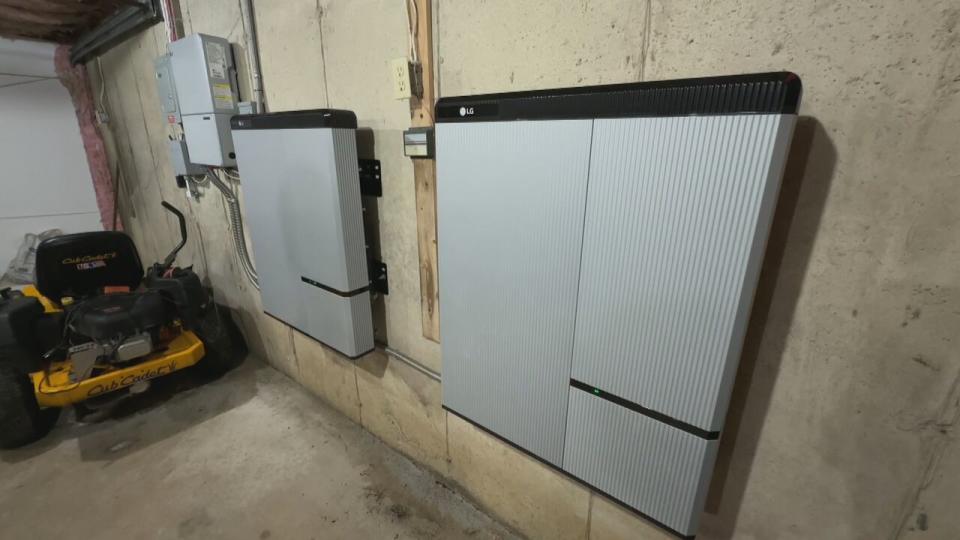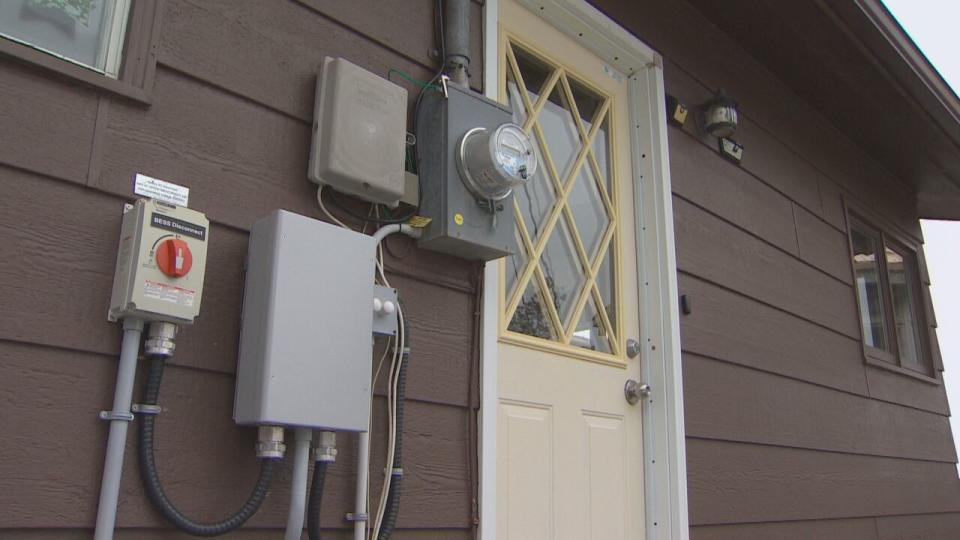Want to keep your home powered during an outage? Try a big battery that lasts 3 days

Nova Scotia Power says it will take the next year to evaluate whether it can expand a pilot project that put electrical storage batteries into 125 households across the province.
But it's already a success as far as Tom MacPherson is concerned.
"I've been extremely happy with it," said the spry 87-year-old.
For MacPherson, having a three-day power supply in an outage is worth the $35 a month he pays on the 18.6-kilowatt-hour Sunverge Infinity battery installed in his home as part of the Nova Scotia Power's $19-million smart grid program.
"At my stage in life, I didn't look forward to going out in the middle of the storm and dragging a gasoline generator out to the house and hooking it up and then having to feed gasoline over a period of time," said MacPherson.
"The cost to me [$4,200] was roughly one-third of what it would cost from a general contractor. So to me it was a very good deal and then you could pay for it over 10 years, no interest," he said.
"So I said, 'well, it's for me.'"
Batteries automatically topped up ahead of storms
MacPherson lives in Little Harbour, Pictou County, on the Northumberland Strait.
The wall-mounted batteries in his garage are monitored remotely in Halifax by NSP, which ensures they are charged.
"Before a storm I get an email. The email says we are topping up your batteries because there's a storm coming, so the batteries become topped up and then when the power goes out, the batteries automatically kick in and they usually last about three days."

A Sunverge Infinity battery system installed in Tom MacPherson's garage as part of the Nova Scotia Power's smart grid program. (Dave Laughlin/CBC)
The few times the power has failed the batteries have clicked in automatically with enough for essentials including water pump, refrigerator, lights, heating and cooling and TV.
During post-tropical storm Fiona in September 2022 the supply lasted three days. He was two days without power. But his home was entirely cut off and he figures he would have run out of gasoline for a generator, anyway.
Battery also available for NSP use
The smart grid program also includes separate initiatives for electric vehicle charging and community solar gardens. Ottawa contributed $12 million along with money from the provincial government.

The three-year home battery storage pilot project is part of Nova Scotia Power's $19-million smart grid program (Dave Laughlin/CBC)
The company began recruiting for the battery storage pilot project in November 2020 and 500 people applied.
The Tesla Powerwall 2 battery was also used in the pilot.
Homeowners like MacPherson will own the battery after ten years.
Until then the batteries are NSP property which controls charging, usually at off-peak hours or when excess clean energy is available.

Ed Cullinan is senior manager of residential electrification at Nova Scotia Power. (Dave Laughlin/CBC)
It can also access the energy for its own use.
"We know that that battery is available for the customer to provide backup power. But the rest of the time, when we don't suspect that there might be any problems with the forecast weather event and the grid is operating, we can use energy stored in that battery to operate the grid," said Ed Cullinan, NSP's senior manager for residential electrification.
"We can use it to operate more economically or to store renewable energy for use later when the sun isn't shining or the wind isn't blowing," he said.
NSP says cost has to drop 'considerably'
MacPherson may be a satisfied customer — thanks to the deep discount — but can it be expanded to put batteries in thousands of homes?
"We haven't made a determination on whether or not the program could be scaled. We do know from the capability that we attempted to demonstrate that it did work, and so now it's about whether we can make it work in certain situations and what the best situations exactly are," said Cullinan.
Deciding on that will take a "year or so," he said, with the price to consumers a key consideration.
NSP said the system at MacPherson's home can cost between $12,000 to $14,000 installed.
Cullinan said battery storage could well become part of home resilience in the face of increasingly severe weather, but he is cautious.
"Potentially it could be part of a more regular home appliance going forward," he said.
"I think for the average homeowner, the cost has to come down considerably or programs like this have to continue."
As for MacPherson, he's seriously considering adding solar panels that can be directly connected to the batteries.
In case of longer outages like Fiona "it would be very convenient."
"I love that idea. It really appeals to me."
MORE TOP STORIES

